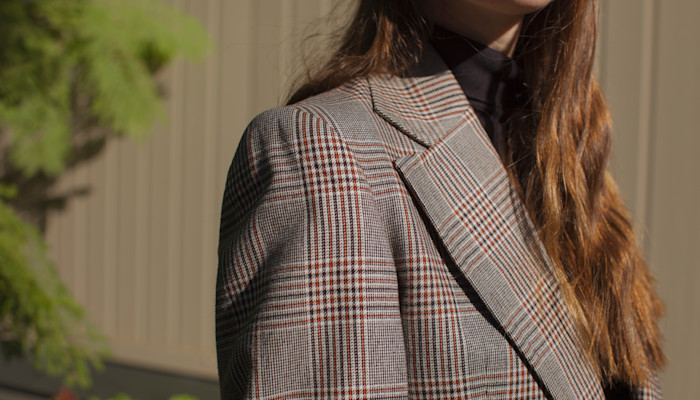Second-hand, not second best
One of the biggest problems in the fashion industry today is the rate at which we throw things away. There is simply too much stuff, and it’s so cheap that we treat our clothes as disposable and replaceable. The number of garments produced globally has doubled in the last twenty years and now exceeds 100 billion. 60 per cent of these items will end up in incinerators or landfill within the first few years after production. Another issue here is that most of our clothes are now made from synthetic fibres, mostly derived from petroleum. When these garments are burned, they release fossil fuels into the atmosphere and contribute further to climate change.
Unfortunately, the fashion industry thrives on a model which focusses on growth. More product = more revenue. But this model is not sustainable. The more product we make, the more resources we use, the more we pressure those working in supply chains, and the more we encourage consumers to buy things they don’t need for unreasonable prices, with money they could be investing in better, long-lasting clothes which they will look after and value, all the while destroying the environment. At the rate the fashion industry is producing (pre-COVID19), their greenhouse gas emissions are expected to rise by 51 per cent by 2030 according to the United Nations Environment Program and Ellen McArthur Foundation. However, this is also coupled with an expected industry growth of 81 per cent by 2030 according to the Global Fashion Agenda – you see the problem.
The fashion industry can’t implement environmental policies fast enough to manage their pollution.
So what can you do?
One easy and affordable way you can reduce your personal impact is to shop second hand. By giving garments another life, we save them from going to landfill and our money supports charities or second hand businesses instead of fast fashion labels. I also find that second hand items tend to be better quality – having already stood the test of time – and they provide an opportunity to be individual rather than trend-focussed. I’m also a fan of hand-me-downs and clothes swapping because the environmental impact is the same, but it’s free!
Here are some of my favourite second hand items in my wardrobe:
1. Second hand wool coat
Purchased at Humana Vintage in Milan for 30 euros.
I'm not normally a pink person, but I loved this coat as soon as I saw it. It is originally from Edinburgh Woollen Mill and was in perfect condition. It got me through a European winter and I've worn it countless times since. If I'd bought it new, I probably would have gone for a smaller size, but the oversized fit is great for layering underneath so I have no regrets there.

2. Second hand cashmere knit jumper
Purchased at Starfish Vintage in Brighton, UK for 40 pounds.
This jumper is the softest and cosiest thing I own. It wasn't the cheapest jumper I've ever bought, but it was a quality purchase which I treasure. Had I bought this kind of jumper new in Australia, it probably would have cost me north of $100-$150. So in that sense it's a bargain.

3. Second hand wool blazer
Purchased at Camberwell Market for $4.
I had been searching for a blazer for months before I came across this one. I was determined to find one second hand (I love the thrill of the chase) and this one caught my eye at the market. It's actually a tailored men's blazer, but it fit just the way I wanted. Top tip - if you go to the market near the end of the day, stallholders tend to reduce their prices to get rid of any final items.

If you want to donate or recycle your old clothes:
Upparel – an Australia clothing recycling company. They collect your old clothes and recycle, redistribute or reuse them. Read more about what they do and how you can get involved on their website.
Australian charity shops – Salvos, Vinnies, Rotary Op Shops, Sacred Heart Mission, Red Cross, your local charity shop.
Further reading:
https://eco-age.com/news/questioning-fashions-growth-imperative
Photo by Elena McGannon
